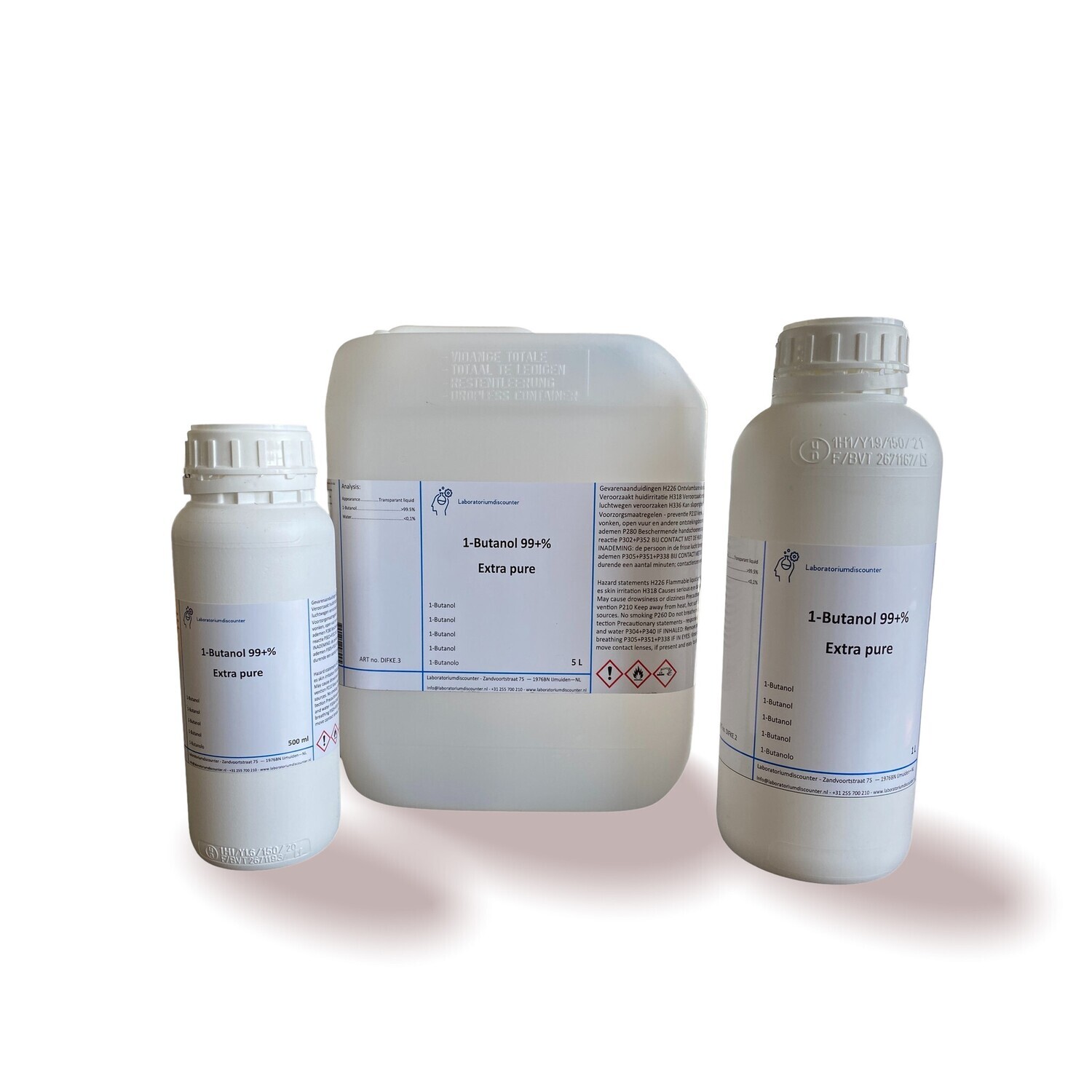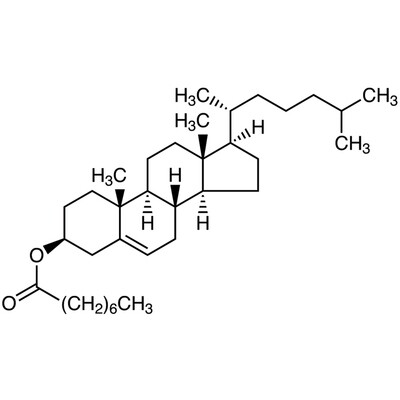1-Butanol 99.5+% Extra Pure 20 Liter
Pay attention: the text and danger designation are only as an example intended and may not be considered the actual information. Lab-O-Rama accepts no liability for the incorrect use of this information or the consequences thereof. For accurate and specific information, users must consult the Material Safety Data Sheet (MSDS) that is automatically provided after the successful placement of an order, can be downloaded or requested through our customer service. You should always adhere to national and international regulations for the correct application of a substance.
P sentences for 1-butanol:
- P210: keeping removing heat/sparks/open fire/hot surfaces. Do not smoke.
- P233: Save in well-closed package.
- P240: Storage and reception reservoir.
-P241: Use explosion-proof electric/ventilation/lighting-/... equipment.
- P242: Only use spark-free tools.
- P243: taking precautions against discharges of static electricity.
- P261: avoid inhalation of dust/smoke/nebula/vapor/spray mist.
- P264: Wash thoroughly after working with this product.
- P271: Use only outside or in a well-ventilated room.
- P280: Wear protective gloves/protective clothing/eye protection/facial protection.
- P303+P361+P353: When contact with the skin (or hair): pull out contaminated clothing immediately. Rinse/soften skin with water.
- P304+P340: After inhalation: bring the victim into the fresh air and rest in an position that facilitates breathing.
- P305+P351+P338: When eyes contact: gently rinse with water for a few minutes; Remove contact lenses if possible; keep rinsing.
- P337+P313: With persistent eye irritation: consult a doctor.
- P370+P378: In case of fire: extinguish with CO2, blushing powder or foam.
- P403+P235: Store in a well-ventilated place. Keep cool.
H-phrases for 1-butanol:
- H225: Lightly flammable liquid and vapor.
- H302: harmful when swallowing.
- H312: harmful when contact with the skin.
- H319: causes serious eye irritation.
- H332: harmful when inhalation.
- H335: can cause airways irritation.
- H336: can cause sleepiness or dizziness.
- H373: can cause damage to organs with long-term or repeated exposure.
- H412: harmful to organisms living in the water, with long-term consequences.










![1-Allyl N-[(9H-Fluoren-9-ylmethoxy)carbonyl]-L-aspartate>98.0%(HPLC)(T)5g 1-Allyl N-[(9H-Fluoren-9-ylmethoxy)carbonyl]-L-aspartate>98.0%(HPLC)(T)5g](https://d2j6dbq0eux0bg.cloudfront.net/images/88473019/4042546642.jpg)


